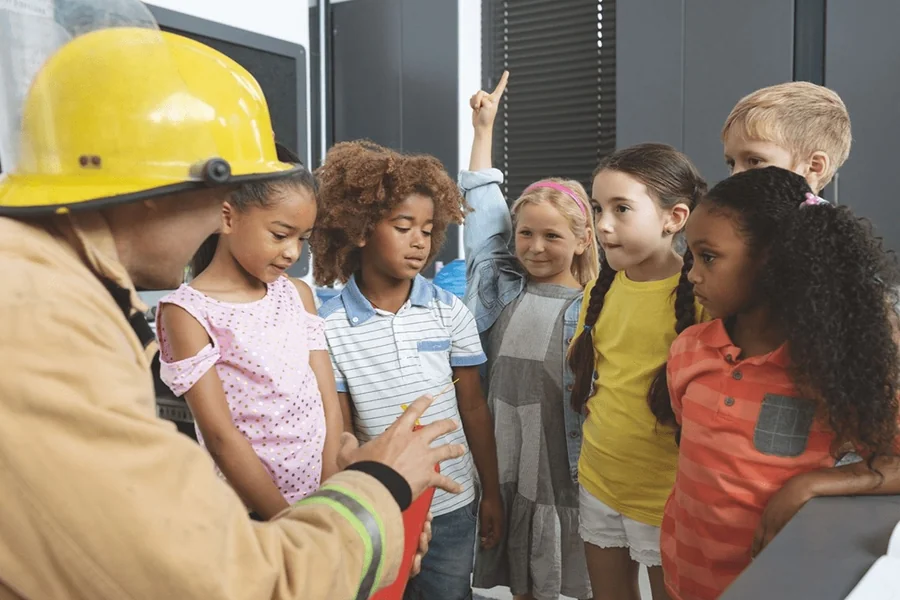Ensuring the safety of students and staff is a paramount concern for educational institutions. Schools are responsible for creating a secure environment where learning can thrive without the threat of harm. One effective method to enhance safety is through the implementation of regular emergency drills. These drills prepare students and staff for various potential emergencies, such as fires, natural disasters, or security threats. By conducting these drills consistently, schools can foster a culture of preparedness, reduce panic during actual emergencies, and ultimately safeguard the well-being of everyone on campus.
THE IMPORTANCE OF EMERGENCY DRILLS
Emergency drills are crucial in preparing schools for unforeseen events. They serve as a proactive measure to ensure that both students and staff know how to respond effectively in a crisis. The primary goal of these drills is to familiarize everyone with the procedures and protocols that need to be followed during an emergency. This familiarity can significantly reduce confusion and panic, which are common reactions during unexpected situations. Moreover, regular drills help identify potential weaknesses in the school’s emergency plans, allowing for timely improvements. By practicing these scenarios, schools can ensure that their emergency response plans are not only theoretical but also practical and effective. This preparation is vital in minimizing risks and ensuring a swift and organized response when real emergencies occur.
TYPES OF EMERGENCY DRILLS
Schools must conduct a variety of emergency drills to cover different potential scenarios. Fire drills are perhaps the most common, teaching students and staff how to evacuate the building quickly and safely. These drills emphasize the importance of knowing exit routes and assembly points. In addition to fire drills, schools should also conduct lockdown drills. These are essential in preparing for situations involving potential threats inside or near the school. Lockdown drills teach students and staff how to secure themselves in classrooms, remain quiet, and wait for further instructions. Another important type of drill is the earthquake drill, especially in regions prone to seismic activity. These drills instruct participants on how to “drop, cover, and hold on” to protect themselves from falling debris. By conducting a range of drills, schools can ensure comprehensive preparedness for various emergencies.
INVOLVING THE COMMUNITY
Involving the community in school emergency drills can enhance their effectiveness. Parents, local law enforcement, and emergency services should be part of the planning and execution of these drills. By engaging with these stakeholders, schools can ensure that their emergency plans are aligned with broader community safety strategies. Involving local emergency services in drills can provide valuable insights and feedback, helping schools refine their procedures. Additionally, informing parents about the drills and their purpose can alleviate concerns and foster a sense of trust in the school’s commitment to safety. Community involvement also ensures that everyone is on the same page during an actual emergency, facilitating a coordinated response. By building strong relationships with community partners, schools can enhance their overall safety and preparedness.
EVALUATING AND IMPROVING DRILLS
Regular evaluation and improvement of emergency drills are essential to maintaining their effectiveness. After each drill, schools should conduct debriefing sessions to assess what went well and what could be improved. Feedback from students, staff, and community partners is invaluable in identifying areas for enhancement. Schools should also stay updated on best practices and incorporate new strategies as needed. This continuous improvement process ensures that emergency plans remain relevant and effective. Additionally, schools should document each drill, noting any challenges encountered and the solutions implemented. This documentation can serve as a valuable resource for future planning and training. By committing to ongoing evaluation and improvement, schools can ensure that their emergency drills are as effective as possible in protecting students and staff.
CONCLUSION
Regular emergency drills are a vital component of school safety. They prepare students and staff for a range of potential emergencies, reducing panic and ensuring a swift, organized response. By conducting various types of drills, involving the community, and continuously evaluating and improving their procedures, schools can create a culture of preparedness and resilience. This proactive approach not only enhances safety but also fosters a sense of security and confidence among students, staff, and parents. Ultimately, regular emergency drills are an investment in the well-being of everyone on campus, ensuring that schools remain safe havens for learning and growth. For those interested in further enhancing their emergency preparedness skills, a first aid course london can provide valuable training and knowledge.






